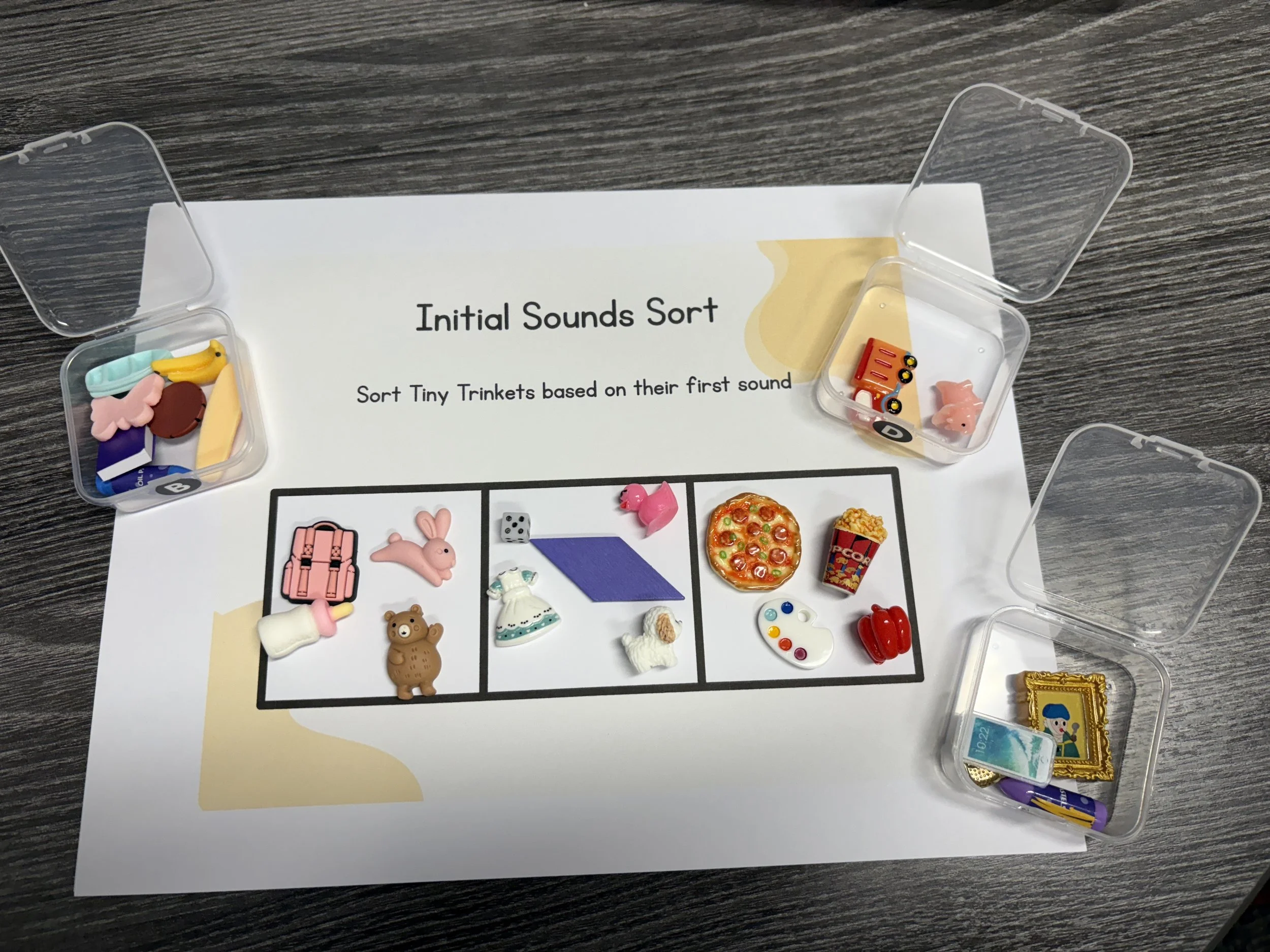Tiny Trinkets for Word Work
Little Trinkets for Big Thinking: Bringing Hands-On Learning Back to Literacy
There’s no shortage of manipulatives to support numeracy instruction; colourful cubes, counters, and fraction circles fill our math shelves. Yet, when it comes to literacy, the same level of tactile support is often missing. Decades ago, small alphabet trinkets were a classroom staple, tiny objects representing words beginning with each sound. Teachers who understood their power used them to build phonemic awareness and alphabetic knowledge long before the Science of Reading made those terms commonplace.
Over time, as pedagogical trends shifted, many of these small treasures were tucked away in cupboards or discarded altogether. But as Louisa Moats (2020) reminds us in her article, “Teaching Reading is Rocket Science,” it requires deep knowledge of how the brain learns to connect sounds to symbols, and intentional, explicit instruction that helps students map spoken language to print. We can’t leave that to chance. Today, with the growing momentum of the Science of Reading, teachers are once again seeking ways to make instruction in phonemic awareness, phonics, and word recognition both meaningful and hands-on.
In my role supporting teachers and learning in classrooms, I often see educators spending hours searching online for alphabet images or cutting and pasting clip art just to create hands-on literacy centers. While these efforts show immense dedication, they also reveal how few ready-made resources exist to make foundational literacy instruction tangible.
That’s where Little Trinkets for Big Thinking was born. Inspired by those classic alphabet buckets from the past, and grounded in current research, I’ve curated sets of small, meaningful objects designed to bring phonics and phonological awareness lessons to life. Each set is flexible, easy to differentiate, and engaging for young learners. Whether used to isolate beginning sounds, segment and blend phonemes, or build connections between sounds and letters, these trinkets make abstract concepts concrete.
When we give students opportunities to handle, name, and play with language through tactile materials, we make space for deeper understanding. We make time for what matters most, inspiring students to both love and learn to read and write.
Students use small items to practice skills in small groups or for independent practice.
Items can be used in so many different ways. As students develop their skills, they can use the items to practice a variety of different skills. These items can provide endless opportunities for independent practice and skill development.
Each box of items includes all 26 letters of the alphabet as well as TH, CH, SH, WH. Each letter box includes between 2-9 items. You can purchase the box of these items with a download of a 26 page activity book (for $198.95) under the Shop tab.


